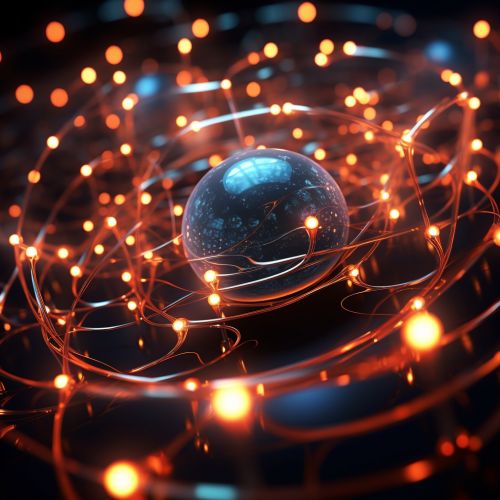Electrotaxis
Overview
Electrotaxis, also known as galvanotaxis, is a phenomenon where cells or organisms move in response to an electric field. It is a form of cellular migration that plays a crucial role in various biological processes, such as wound healing, embryogenesis, and nerve regeneration. This article delves into the intricacies of electrotaxis, discussing its mechanisms, applications, and implications in the field of biology and medicine.
Mechanism of Electrotaxis
The mechanism of electrotaxis involves the detection of an electric field by cells or organisms, followed by a directed movement towards or away from the source. This process is facilitated by a variety of cellular components, including ion channels, gap junctions, and the cytoskeleton. The electric field induces a redistribution of charged particles across the cell membrane, leading to changes in cell polarity and subsequent cell migration.


Ion Channels
Ion channels are integral membrane proteins that allow ions to pass through the cell membrane. They play a pivotal role in the process of electrotaxis, as they are responsible for the initial detection of the electric field. The electric field causes a change in the distribution of ions across the cell membrane, which is sensed by the ion channels. This triggers a series of intracellular events that lead to changes in cell polarity and migration.
Gap Junctions
Gap junctions are specialized intercellular connections that allow for direct communication between the cytoplasm of adjacent cells. They play a significant role in electrotaxis, as they facilitate the propagation of the electric signal across a group of cells. This enables a coordinated response to the electric field, resulting in collective cell migration.
Cytoskeleton
The cytoskeleton is a complex network of protein filaments that provides structural support to the cell and is involved in various cellular functions, including cell migration. In the context of electrotaxis, the cytoskeleton undergoes dynamic rearrangements in response to the electric field, driving the directional movement of the cell.
Applications of Electrotaxis
The phenomenon of electrotaxis has a wide range of applications in various fields, including cell biology, developmental biology, and regenerative medicine.
Cell Biology
In cell biology, electrotaxis is used as a tool to study cell migration and its underlying mechanisms. By applying an electric field, researchers can induce directional cell migration and observe the cellular and molecular processes involved.
Developmental Biology
In developmental biology, electrotaxis plays a crucial role in embryogenesis. The electric field generated by the embryo guides the migration of cells, contributing to the formation of various tissues and organs.
Regenerative Medicine
In regenerative medicine, electrotaxis is exploited for tissue engineering and wound healing. The application of an electric field can stimulate the migration of cells towards the site of injury, promoting tissue repair and regeneration.
Implications for Future Research
The study of electrotaxis provides valuable insights into the mechanisms of cell migration, which has implications for various areas of research and medicine. For instance, understanding how cells detect and respond to electric fields could lead to the development of new strategies for tissue engineering and regenerative medicine. Additionally, it could shed light on the processes involved in cancer metastasis, as cancer cells often exhibit abnormal migration patterns.
